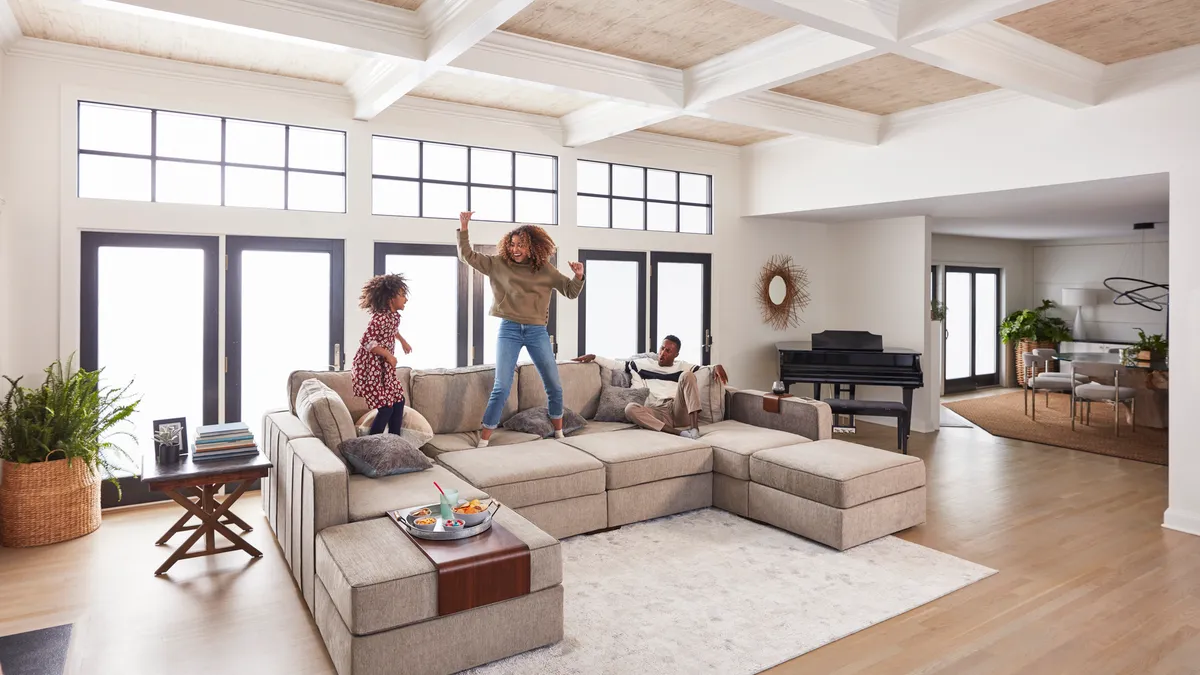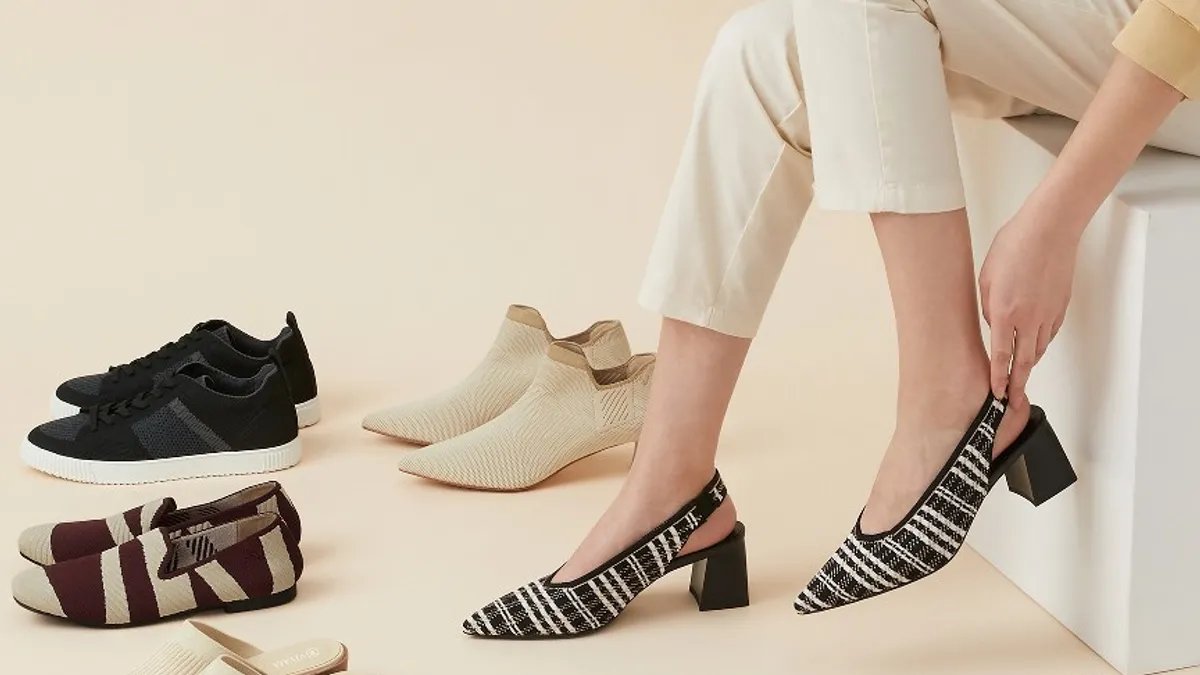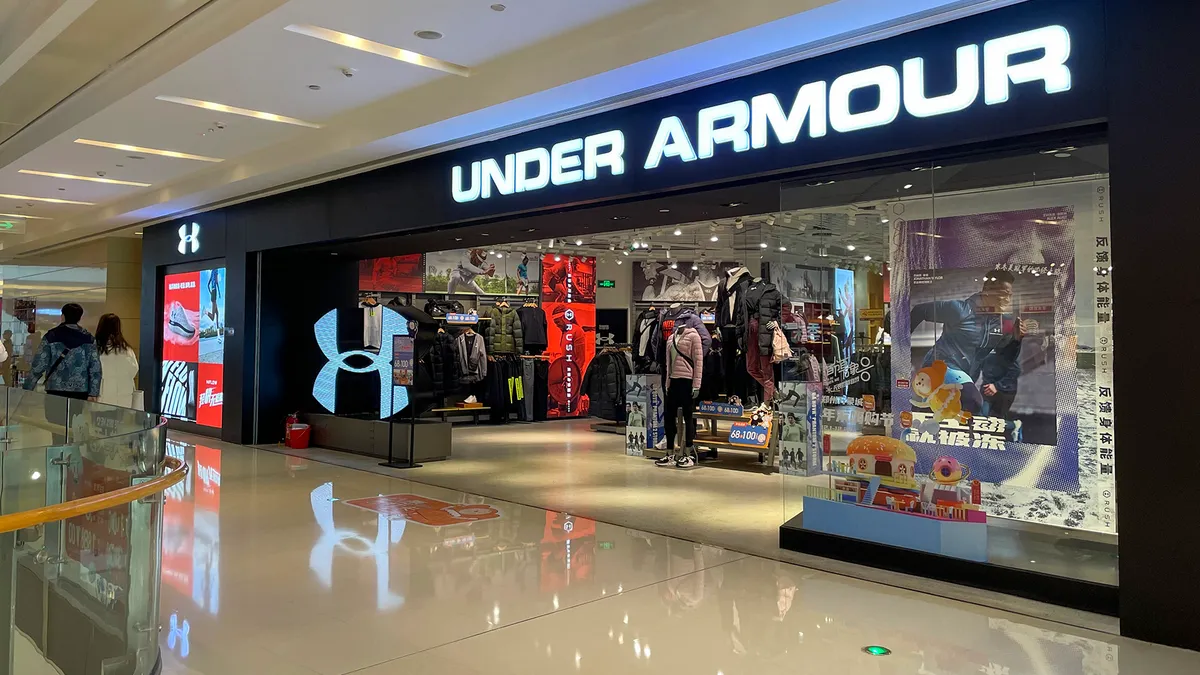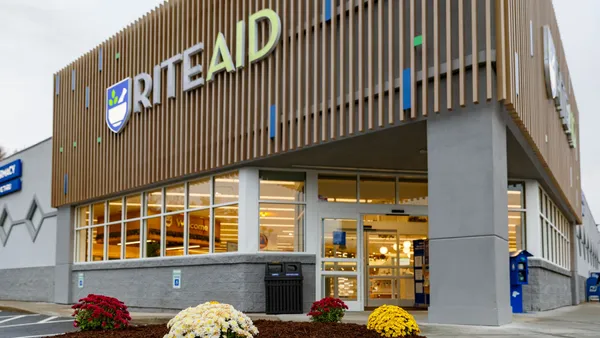Despite waning demand for home goods, Lovesac has been able to hold onto its sales momentum.
The online furniture brand, known for its “Sactional” couches and “Sac” bean bag chairs, grew its net sales by over 55% in 2021 to $498.2 million, while its comparable sales grew by 46.9% year over year. The brand’s net income for the year also increased by over 200% to $45.9 million.
But how did a brand that started out selling bean bag-like products become so successful?
Humble beginnings
Shawn Nelson, Lovesac’s founder and CEO, created the first Lovesac product — an eight-foot wide bean bag-like product — in his parents’ basement in 1995. He started out just producing the sacs for friends, but within a few years he and his business partner Dave Underwood were taking orders from a major retailer.
“It was the tiniest little company and we pretended to be something bigger than we were,” Nelson said. “We got this big order for 12,000 units.”
That order from the retailer — Limited Too — forced Lovesac to create its own factory and take its business to the next level. The company, which was strapped for cash, ended up using farming equipment to shred the material needed to stuff its products.
Nelson quickly realized the brand needed stores to support the growing demand for its products, so Lovesac set out on a brick-and-mortar expansion after opening its first location in 2001.
“It's been just putting one foot in front of the other for a very long time to get to where we are,” Nelson said.
And after customers repeatedly tried to buy the sofas in the corner of its stores, the company saw its next big opportunity and launched its first couch in 2006.
“We spent the next decade figuring out how to become a serious furniture retailer because we were across the hall from the Pottery Barns, West Elms and Crate and Barrels of the world,” Nelson said.
The company, which went public in 2018, has now grown to become one of the top 30 furniture brands in the country, according to Nelson.
How a streamlined product mix has played to Lovesac’s advantage
The last couple of years have been a boon to most retailers selling home goods and furnishings as consumers invested in the spaces they were spending more time in.
“The end of 2020 and 2021 especially was a great time to be in the home goods space,” Tyler Higgins, a managing director and retail practice lead at AArete, said. The sector “saw a big boom — obviously lots of people at home. You're working on home projects — acquiring new couches and furniture, new mattresses [and] everything in between.”
But demand has begun to ease from the early days of the pandemic, sending sales down for several home retailers, including other DTC brands like Wayfair.
“We're coming to a point now where a lot of that has plateaued or even reverted back a little bit,” Higgins said.
Lovesac, however, appears to be holding onto its sales gains. The brand earlier this month reported second quarter net sales reached $148.5 million, a 45% increase from the same period last year, while its comparable sales grew 31.1%.
Part of Lovesac’s advantage over other digitally native brands is its extensive store base.
While the company in 2016 pivoted to a showroom model where store patrons are directed online to complete purchases, sales from that channel — which also includes kiosks and mobile concierges — increased 47.7% year over year in the second quarter. The company ended its second quarter with 174 showrooms, which has helped Lovesac extend its reach and acquire new customers.
“That's a huge footprint for any direct-to-consumer brand to have these showrooms,” Higgins said. “They're able to have a pretty wide range, which differentiates them from the Wayfairs of the world.”
Another advantage Lovesac has is that it’s simplified its product mix, which ultimately helped it when other furniture retailers were facing out-of-stocks due to industry-wide supply chain challenges.
Lovesac is able to offer consumers essentially custom-made pieces of furniture without the wait because the brand’s Sactional couches are designed to be modular, meaning they start with core pieces — a seat base, a couple of cushions and arms sides — and can be expanded upon using those same pieces. The company also houses around 30 fabric designs off the shelf consumers can choose from, or select from more than 200 fabrics for custom order that typically takes about four weeks to make.
“We have thousands of Sactional seats and sides in stock, ready to go,” Nelson said. “If you place your order right now to ship out tomorrow … We stock them deep because there's no risk to it like a lot of other sofa manufacturers. They start with eight or 10 or 20 lines of sofas. They can't possibly stock all those, and then you multiply that across all the different fabrics they offer.”
The streamlined selection, Nelson said, is why its showrooms can operate so efficiently. The reason its stores are able to have a relatively small footprint — about 800 square feet — is because there isn’t a need to showcase each individual SKU. Consumers can test out the product and sit down with a team member to understand how the pieces can work together to create different configurations.
“They have a very defined product mix and a very defined approach. They stay core to their business and not try to overcomplicate it,” Higgins said.
Making products ‘endlessly reverse compatible’
As consumers feel the pressures of inflation and other economic uncertainty, many are beginning to pull back on discretionary spending.
“They have to contemplate where they spend their money,” Nelson said, noting however that Lovesac remains relatively isolated from those effects due to the fact that it caters to a higher income shopper.
Lovesac, which sells its Sactional sofas for several thousand dollars, sits in the homes of celebrities, as well as NFL and NBA players, but generally targets those in the upper middle class, Nelson said.
“We're not bulletproof. But it's certainly a good portion of the market for us to be focused on and thankfully that's who we have the most appeal with,” he added.
Lovesac’s continued appeal also comes from the brand’s commitment to develop new products marketed to both new and existing customers.
“They did not stop innovation,” Suketu Gandhi, a partner at Kearney, said. “One of the big challenges that DTC brands have is you get a one-hit wonder product.” Brands will then push a lot of marketing spend toward customer acquisition, but unless brands grow and evolve with their consumer basis, consumers will ultimately move on to the next brand or product.
Aside from making the initial pivot from focusing on its Sacs to Sactionals, Lovesac has also expanded into home audio equipment designed to be integrated within its products.
Lovesac’s products are “endlessly reverse compatible with the new inventions we put out there, including the most complex, StealthTech, complete surround sound system,” Nelson said. “That value proposition is so standalone in the marketplace. That's why we're winning.”






















